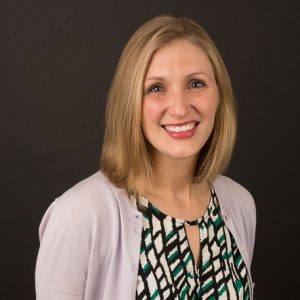As a high school teacher in a struggling public system, my world was a flurry of worksheets and standardized content. It was certainly not what I’d envisioned when I entered the profession, but our leaders proclaimed it a necessary means to better student outcomes. Meanwhile, friends who’d gone to work for exceptional organizations outside of education were reporting a very different theory of action. In these high-performing spaces, employees were given considerable latitude to achieve strong results. They were trusted—and expected—to take initiative in the face of uncertainty. By and large, they felt valued for their expertise.
Though embedded within the same social context, we were on divergent paths. Our public school system was tackling complexity through greater levels of lock-step standardization, all the while private sector giants, like Google and Facebook, were racing off in the opposite direction.
I couldn’t help but wonder what we were missing.
This concern became both the impetus and the lens for “How to create higher performing, happier classrooms in seven moves: A playbook for teachers.” In this new resource from the Clayton Christensen Institute, we document a yearlong teacher and student empowerment study that explores the ways in which classrooms can be reshaped to reflect the emboldening best practices of innovative private sector organizations. As readers will see, this reshaping closely aligns with the work that some of our most inspired educators are doing already. It will ring especially true for those in Montessori-influenced environments.
In an age of increased standardization, we hope this playbook will spark the conversation and create the practical toolkit necessary for educators of all settings to reclaim their license as creative professionals. Given this charge, the paper does not provide a one-size-fits all set of instructions. Instead, we offer guiding principles and case-based discussion as a framework to equip educators for meaningful application in their distinct context.
Now the founder, leader, and Spanish teacher of a new high school, I’m one of those educators. At Oxford Day Academy, we have made the playbook moves our own, and it has transformed the way we teach and learn. For us, these moves came to life in the following ways:
- Move 1: Teach mindsets became daily time for wellness, music, and art. Each morning, our entire school spends an hour practicing mindfulness and developing creative expression; this is our opportunity to explicitly teach the importance of a growth mindset and self-care.
- Move 2: Release control became independent studio time. We have abandoned traditional classrooms in favor of self-directed learning studios. Students are given the autonomy and support to tackle challenges at the pace and order that makes sense to them.
- Move 3: Encourage teaming became collaborative fieldwork. Oxford Day Academy students spend time every day in the field, collaborating with each other and with local community members to identify, unpack, and address real social issues.
- Move 4: Give feedback became tutorial-based instruction. The typical interactions between high school students and teachers did not lend themselves to personalized feedback, so we exchanged teacher-led lectures for the tutorials used in Oxford and Cambridge. This alternative methodology ensures that all student-teacher time is dynamic, co-generative, and focused on individualized feedback.
- Move 5: Build relationships of trust became aspirational coaching. Each student is matched with a Socio-Emotional Learning Coach (SELC); these adults collaborate with our young people to better understand their goals and dreams, and to map the many pathways toward their visions of success.
- Moves 6 & 7: Be accountable became portfolio-based evaluation. The last two moves of this playbook focus on holding students and adults accountable for the results they set out to achieve. Our students build portfolios that document and showcase the growth they are making toward the goals they have set for themselves. No two portfolios are alike; each reflects the distinct interests, aspirations, and progress of its creator.
The point of sharing our school’s choices is not that other schools “copy and paste” these decisions into their own classrooms. Ours is only one example, a single application of the seven moves amongst an infinite number of possibilities. We would also name that implementing the seven moves has required a fair bit of courage. It has required trust. Above all else, it has required our reaffirmation of the teaching profession and of the complex art behind each educator’s craft.
As a school leader, I know how scary this leap can feel; even scarier, however, is the thought that we never make it. If we are serious about 21st-century education, then we must align with 21st-century workplace practices. Fortunately for many of us, this alignment will mean a shift away from the rote standardization we have come to expect and a return to the heart and soul of what drew us to teaching in the first place.
For more, see:


